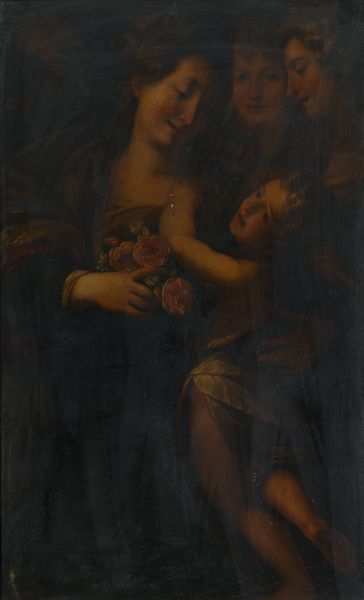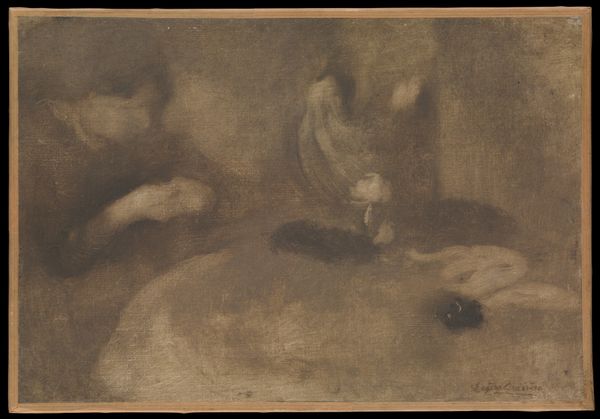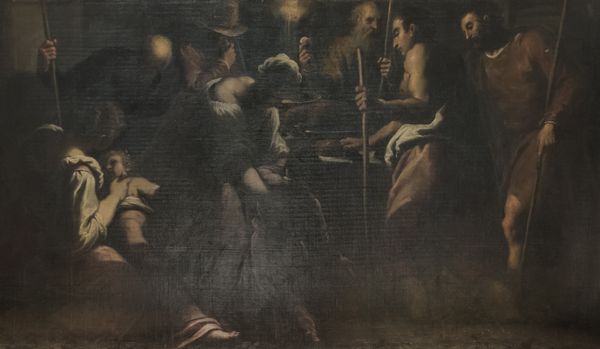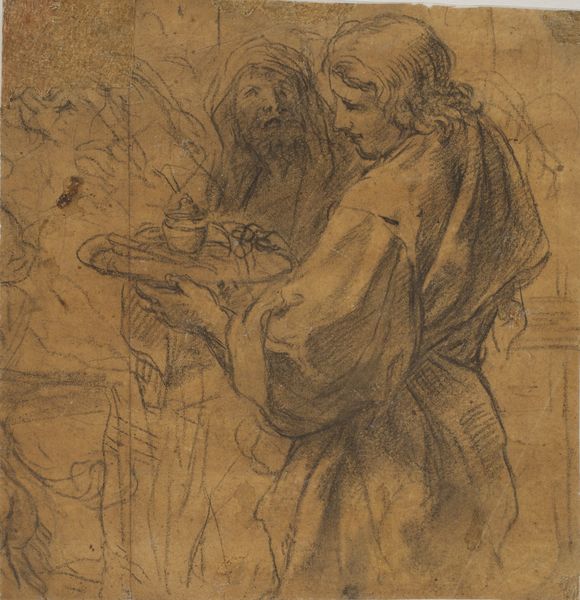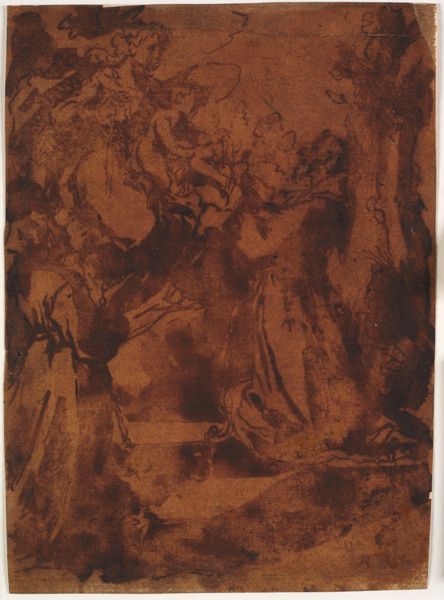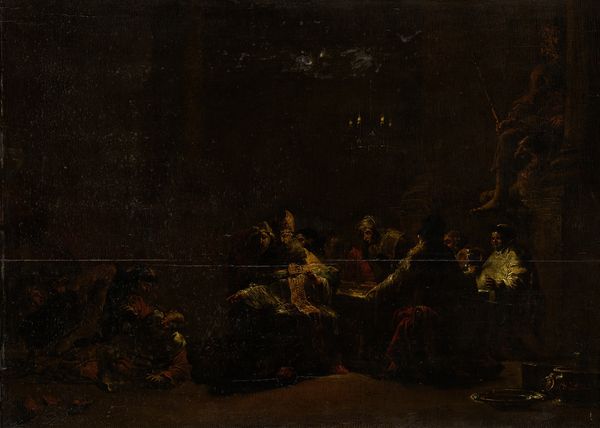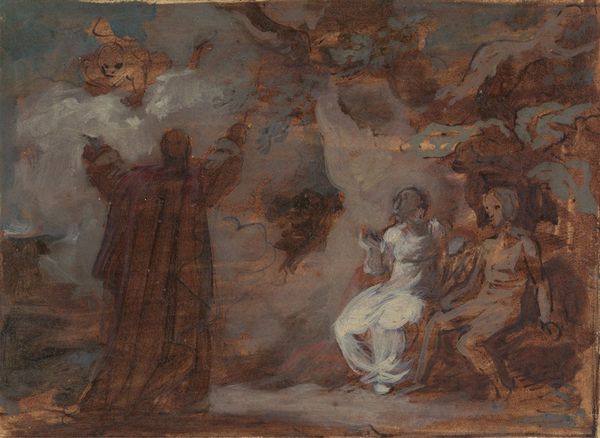
Young Woman with a Candlestick, Old Woman and a Violin Player 1605 - 1656
0:00
0:00
painting, oil-paint, wood
#
portrait
#
baroque
#
painting
#
oil-paint
#
figuration
#
chiaroscuro
#
wood
#
watercolour bleed
#
genre-painting
#
charcoal
Dimensions: 43.5 cm (height) x 56 cm (width) (Netto)
Curator: Immediately, I’m struck by how Gerard van Honthorst uses light in this piece. The painting, entitled "Young Woman with a Candlestick, Old Woman and a Violin Player," thought to be from sometime between 1605 and 1656, relies so heavily on that stark contrast, doesn’t it? Editor: It’s intensely intimate, isn’t it? The heavy shadow amplifies that single source of light on the young woman's face. But who are these people? It's staged, carefully composed, but to what end? Curator: Well, consider that Honthorst worked in Rome during the height of Caravaggism. He's clearly playing with tenebrism, a technique which gives so much emphasis to light and shadow, typical of the Baroque period, but pushing it here in order to give us, the viewer, the impression that we’ve just happened upon the scene. And it's painted in oil on wood. The choice of material matters. Editor: Of course it does. Look at that woman's exposed skin – this feels deliberately performative. I see the clear influence of his time in Rome and am tempted to read this painting in connection to ideas about the objectification and commodification of women that resonate deeply with the sociopolitical status quo. There's an exchange happening here, of youth and music, of what women’s labor really means, isn't there? Curator: I agree, this piece presents those figures so strategically, but perhaps consider Honthorst’s skill in manipulating the texture of oil paint. It adds so much to how the surfaces of the objects and people reflect the light. Take the young woman’s flesh for example... or the shimmering fabric draped around her… they guide the viewer’s eye to appreciate how Baroque-era painters created their magic, with precise pigment. Editor: Yes, but that precision served specific patriarchal narratives. This work prompts us to ask who had the power to represent these women, and under what conditions? It’s crucial to see paintings like this not as simple depictions, but as actively shaping the viewer’s understanding of gender and sexuality, reflecting existing power structures. Curator: I understand your perspective, and in considering how these painters achieved those shimmering and lustrous effects – it all relates to the consumption of precious raw materials! The social structure needed a system to support those very artists and their choice in medium to render works like these in this way. Editor: Perhaps this also reinforces my viewpoint that even aesthetic appreciation is rooted in that network of power and privilege, so understanding what’s been depicted demands more work from us today. Curator: I leave with such an appreciation for the painter’s masterful manipulation of their tradecraft and artistic methods. Editor: And I, considering our place today as agents capable of influencing power dynamics by offering an awareness that the conditions surrounding this artwork still resonate in complex ways within our present reality.
Comments
No comments
Be the first to comment and join the conversation on the ultimate creative platform.
